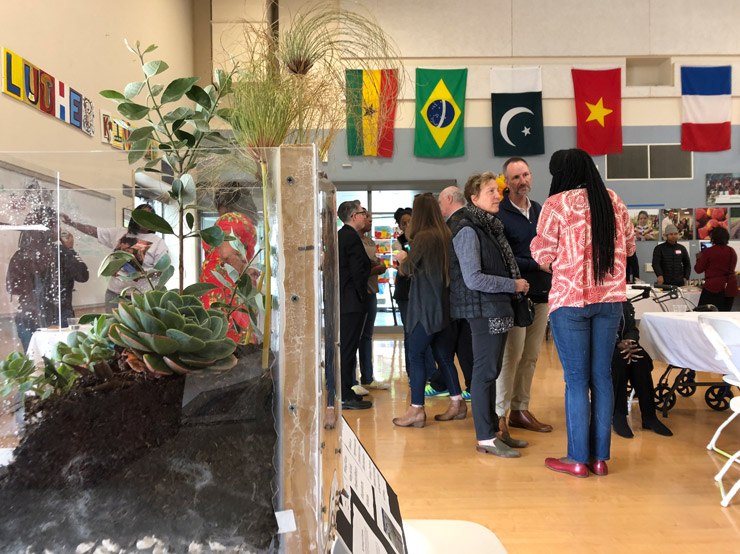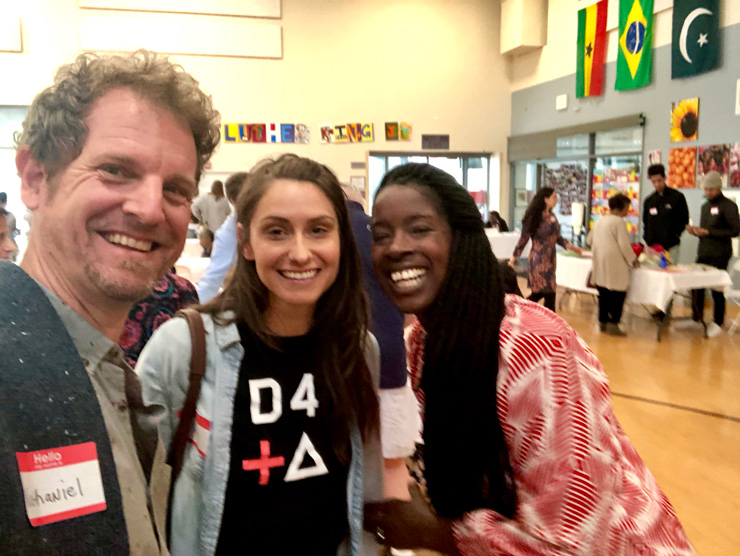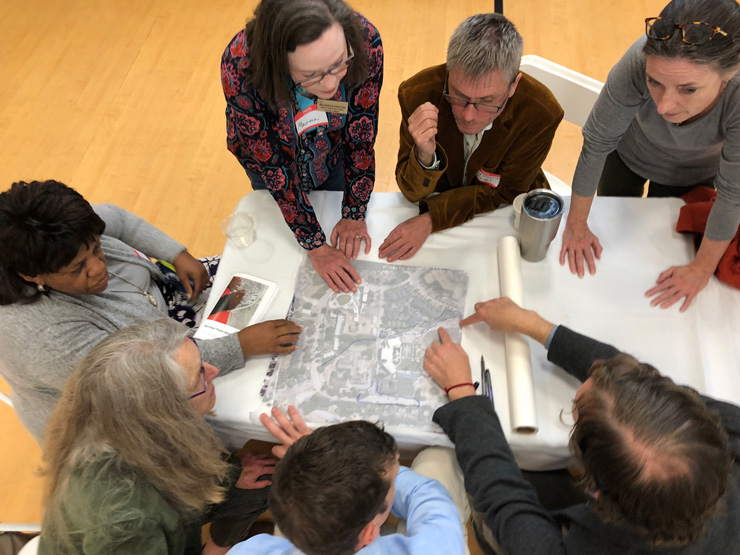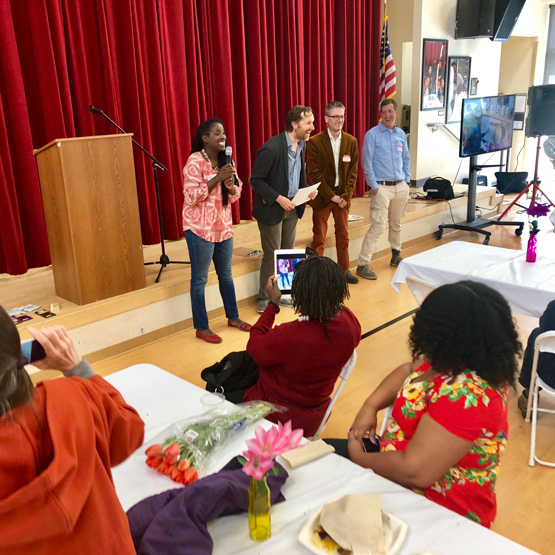Some of the damage from global warming arises as the result of disasters—New Orleans in 2005 and Houston and Puerto Rico in 2017 come immediately to mind—and some is slow moving and chronic. Whether harm is done over time or all at once, we’ve learned that the destruction can be compounded many times over when racial and economic injustice shapes how we prepare for and respond to climate-related risks.
We live in the midst of an interesting experiment focused on building equitable responses to the effects of global warming. If you walk the paths around here, you know about sea level rise, not only from the educational signs posted by the county, but from those days when we’re inundated by a king tide. Rather than waiting for the county or state to take action, local residents in Marin City are busy figuring out what the community can do for itself.
Marin City is a prime example of those places in the country that are most vulnerable to damage from climate change. These are the places where decades of red-lining and other forms of officially sanctioned racial exclusion have ensured a lack of political power. Even though Marin City faces a higher threat of harm—with its aging infrastructure and flood-prone single entry and exit—it simply cannot compete with other more influential areas of Marin County when it comes to setting funding priorities.
Marin City leaders have embarked on a program called Designing Our Own Solutions to ensure that we don’t replicate locally the patterns that have amplified the harms caused by global warming in other places.
On the first Saturday in May, I joined other members of the floating homes community at an event showcasing some of those solutions. We also celebrated the first class of Marin City residents to graduate from a training course organized by Shore-Up Marin, an environmental justice and climate equity organization. Working together, these leaders are learning to combine detailed multi-generational local knowledge with ecosystem and permaculture expertise to expand the menu of options to address flooding and other issues.
The close proximity of Marin City has been one of many great things about our move to Sausalito’s floating homes community. Marin’s lack of diversity was the main thing that made us hesitate about the choice when my Brazilian husband and I came here from New York City in 2015. We realize that Marin City can’t simply be an asset that makes our experience better; we need to be involved, to support the community to realize its vision, and to encourage our neighbors on this side of the freeway to see that we’re in fact one community, divided by history and concrete, but united by a common future.
Further reading:
Designing Our Future | The Resilient Bay Summit | May 17 & 18
REFLECTIONS FROM SHORE UP MARIN, April 30 2018
Overview MARIN CITY + PSET (Permaculture + Social Equity)
WATERSHED WALKING TOUR MARIN CITY, March 6 2018












